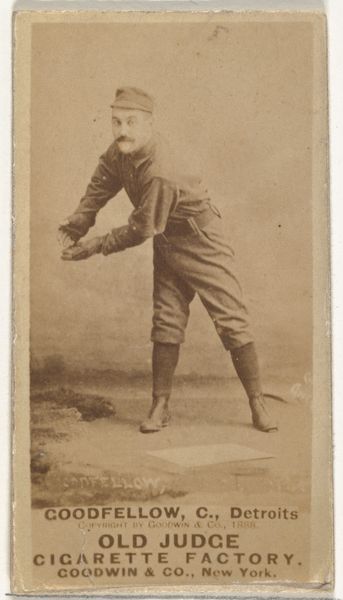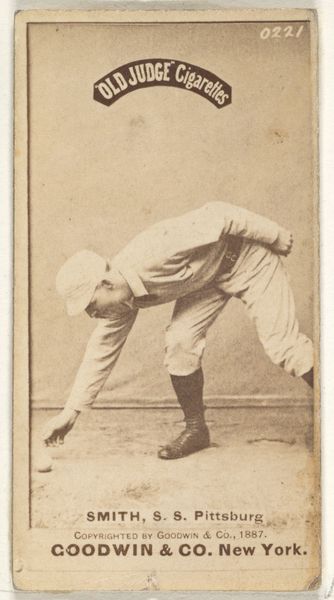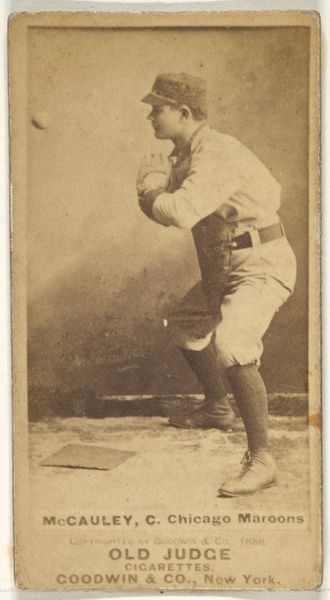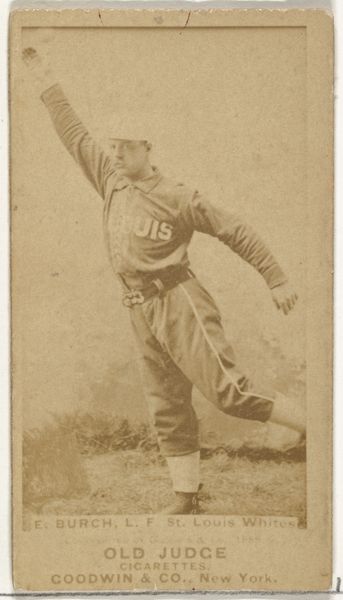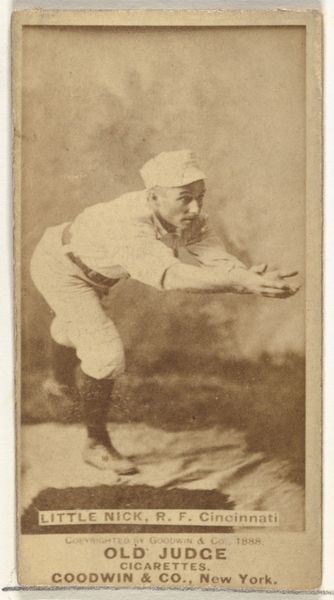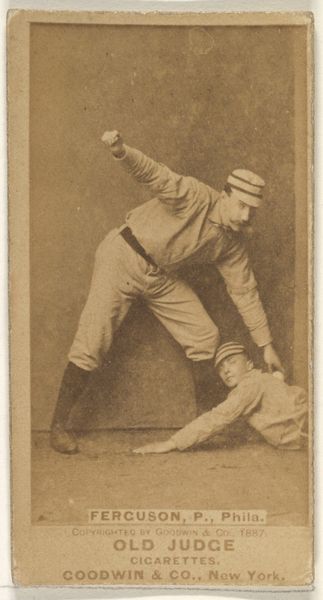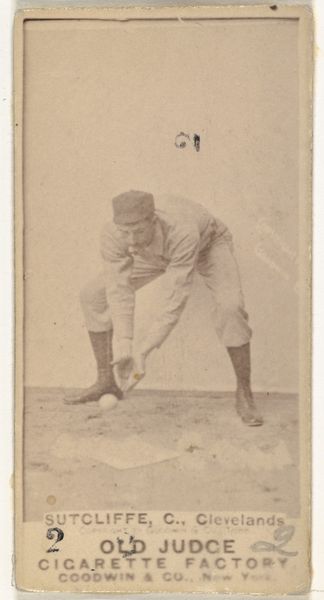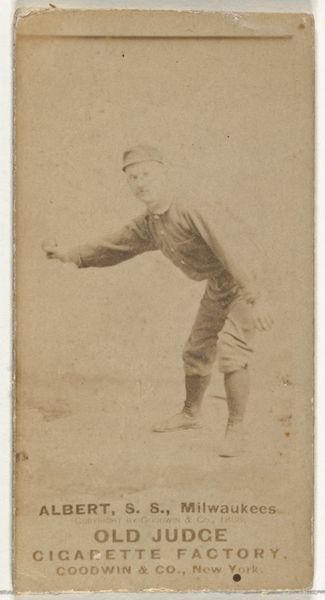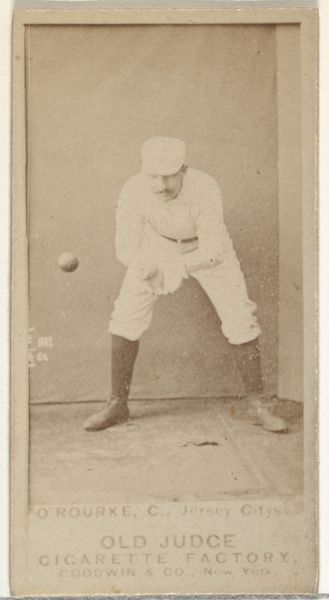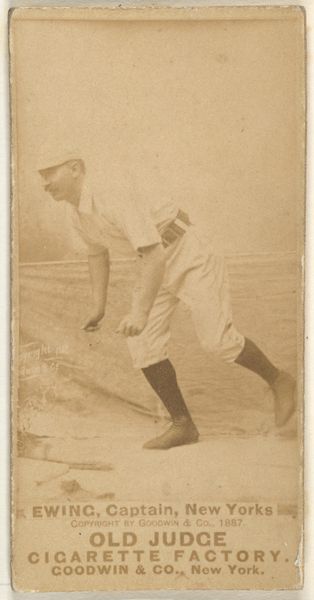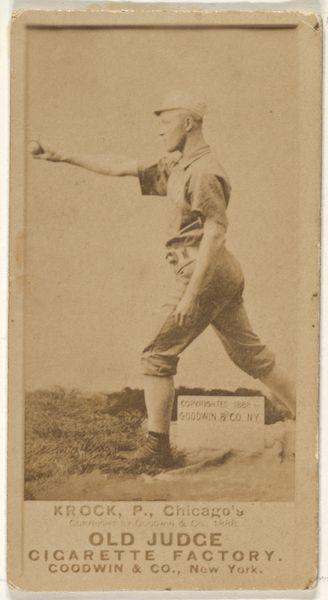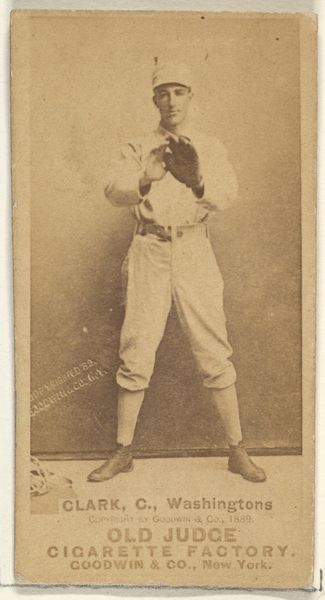
Samuel E. "Sam" Barkley, 2nd Base, Kansas City Cowboys, from the Old Judge series (N172) for Old Judge Cigarettes 1888 - 1889
0:00
0:00
drawing, print, photography, albumen-print
#
portrait
#
drawing
#
toned paper
# print
#
baseball
#
photography
#
men
#
athlete
#
albumen-print
Dimensions: sheet: 2 11/16 x 1 3/8 in. (6.9 x 3.5 cm)
Copyright: Public Domain
Curator: What strikes me most is the stark tonal contrast; the ochre tones give the print an antiquated, almost ghostly presence. Editor: Precisely, it’s a ghostly relic from the late 1880s – this is a baseball card of Samuel E. “Sam” Barkley, the second baseman for the Kansas City Cowboys. The card comes from the "Old Judge" series, distributed by Goodwin & Company as part of their Old Judge Cigarettes marketing. Curator: The composition certainly captures an athleticism. There’s a compelling tension in Barkley’s posture, all angular extensions implying intense energy directed onto the scene below. And there's another person on the ground at his feet; some kind of athletic play being enacted, clearly. Editor: You've got it. The composition captures the grit of baseball in that era, a very raw and aggressive play being shown. It also really speaks to how deeply integrated advertising was in the budding American culture. Cigarettes selling sport stars—amazing! It's a piece of social history condensed into this little albumen print. Curator: The photograph also seems self-aware, employing theatrical gesture rather than absolute representational accuracy. Take note, the lighting sculpts a clear hierarchy; Barkley dominates in the sun while the teammate on the ground is in relative shade, supporting that main read of aggression you were highlighting. Editor: Indeed, and that relates back to the card's function, really; creating celebrity and elevating a name to the broader public—the card functions as a social symbol beyond sport, an exchange of values. That pose wasn’t accidentally struck, I can assure you. Barkley needed to command respect through image. Curator: So we're seeing both the semiotics of sport—the codified language of physical competition—and the visual language of advertisement merging quite literally to present the athlete. An athlete and his gesture, and their placement inside of this commercial product's design, combine in surprising ways. Editor: It makes one appreciate the ways even these minor artifacts from our past really reflect and construct social realities, more than just mirror it passively. A cigarette card isn't just about baseball, but power, consumerism and aspiration at the end of the 19th century. Curator: Yes, the piece as an object is not merely a depiction, but actively creates meaning within the visual dynamics of that era. Editor: Absolutely; the piece invites a broader look at visual culture from the time and sport’s growing role in American life, don't you think?
Comments
No comments
Be the first to comment and join the conversation on the ultimate creative platform.
